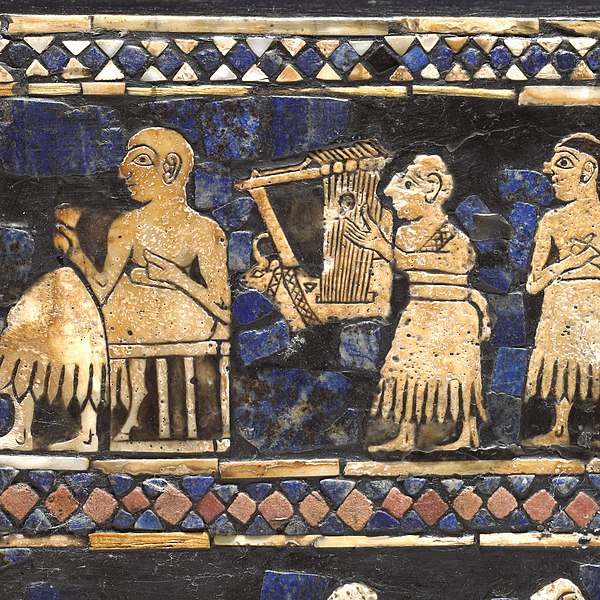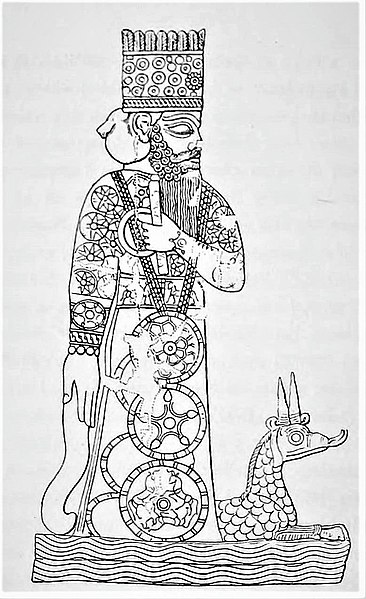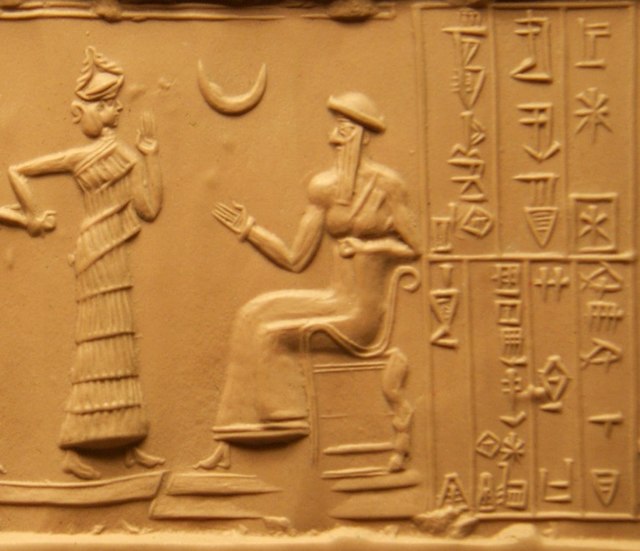Music was ubiquitous throughout Mesopotamian history, playing important roles in both religious and secular contexts. Mesopotamia is of particular interest to scholars because evidence from the region—which includes artifacts, artistic depictions, and written records—places it among the earliest well-documented cultures in the history of music. The discovery of a bone wind instrument dating to the 5th millennium BCE provides the earliest evidence of music culture in Mesopotamia; depictions of music and musicians appear in the 4th millennium BCE; and later, in the city of Uruk, the pictograms for ‘harp’ and ‘musician’ are present among the earliest known examples of writing.
A depiction of a singer and a lyre player entertaining guests at a banquet c. 2500 BCE. Music was a normal part of social life in Mesopotamia. Detail from the Standard of Ur. British Museum, London.
Ea (also Enki), deity of music, wears a horned helmet and holds a cup from which water overflows. Old Babylonian period, 19th–17th century BCE. Pergamon Museum, Berlin.
Musicians of the Assyrian army c. 645 BCE. Nineveh, bas relief in Gypsum alabaster. Palace of Ashurbanipal, Nineveh.
Plaque with male musician playing a harp. Ischali, baked clay. Oriental Institute Museum, University of Chicago, Chicago.
Ancient Mesopotamian religion
Mesopotamian religion refers to the religious beliefs and practices of the civilizations of ancient Mesopotamia, particularly Sumer, Akkad, Assyria and Babylonia between circa 6000 BC and 400 AD. The religious development of Mesopotamia and Mesopotamian culture in general, especially in the south, were not particularly influenced by the movements of the various peoples into and throughout the area. Rather, Mesopotamian religion was a consistent and coherent tradition, which adapted to the internal needs of its adherents over millennia of development.
The god Marduk and his dragon Mušḫuššu
The "Burney Relief", which is speculated to represent either Ishtar or her older sister Ereshkigal (c. 19th or 18th century BCE)
Impression of the cylinder seal of Ḫašḫamer, ensi. The seated figure is probably king Ur-Nammu, bestowing the governorship on Ḫašḫamer, who is led before him by the goddess Lamma. Nanna himself is indicated in the form of a crescent (c. 2100 BCE)







